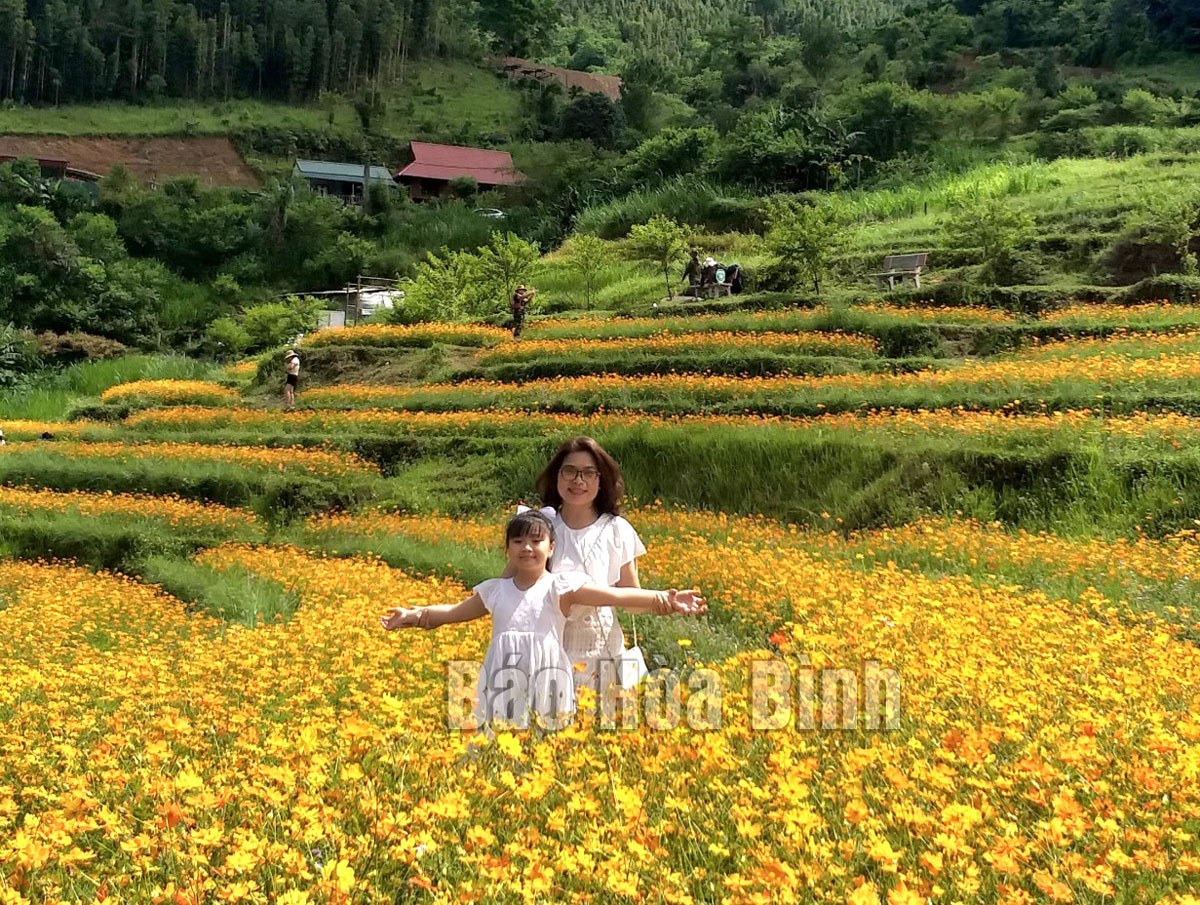(HBO) - From a remote area, Mung hamlet in Hop Phong commune, Cao Phong district, northern mountainous province of Hoa Binh, has over the recent times become a magnet attracting a large number of tourists both inside and outside the province to contemplate the wild, beautiful natural space with colorful flower fields.
Flower
fields of Mung hamlet, Hop Phong commune, Cao Phong district, Hoa Binh province,
attract tourists to the locality.
Recently, endless fields of colorful flowers on terraces of Mung
hamlet became a place that attracts many tourists to visit and experience the
landscape in the locality, spreading the "check-in culture" on social
networks.
The 10-km road from the centre of Cao Phong town to Mung hamlet
is a challenge to tourists, but when they reach the peak of the hamlet, they
can see the whole area filled with yellow and purple colours of flowers in the
middle of mountains and forests like in fairy tales.
Lying at an altitude of about 700 - 800 m above sea level and
dubbed as the "roof" of Cao Phong district, Mung hamlet enjoys a
fresh and cool weather even on sunny days.
Most of the locals in the village are Muong ethnic people. Some
households have joined hands to convert rice fields into flowers ones and
develop community-based tourism. Flowers have been planted on an area of about
a hectare, including native ones, yellow butterfly flowers, roses, cherry
blossoms, among others, creating a picturesque scenery.
Tourists can explore the landscape in the village such as
visiting the bamboo forest, watching terraced fields, and participating in
daily life activities of the locals. A number of community-based tourism
products, catering services, and learning about local people's customs and
habits have been introduced to serve tourists.
Bui Van Hieu, head of Mung hamlet, revealed that in the past years, not many
tourists came to Mung hamlet. However, when the flower fields opened on May 22,
the number of visitors to the locality has increased significantly, especially
during weekends, helping generate additional income for the locals. Currently,
the village management board and households are planning, renovating, planting
more flowers, and repairing the road to serve tourists.
The
village will restore old stilt houses, build galleries, revive traditional
culture of the Muong ethnic group, and plant more other flowers to beautify the
Mung hamlet, attracting more tourists to the locality.



